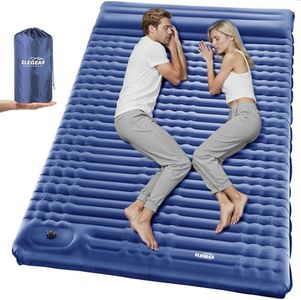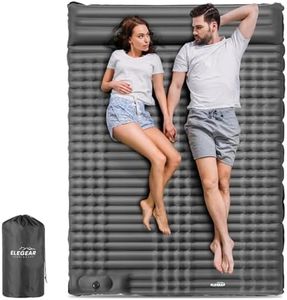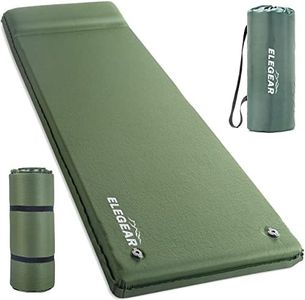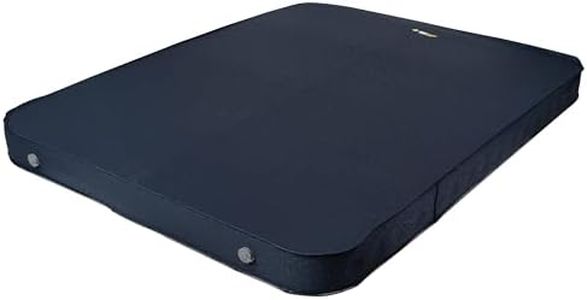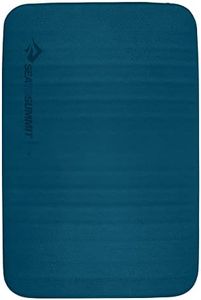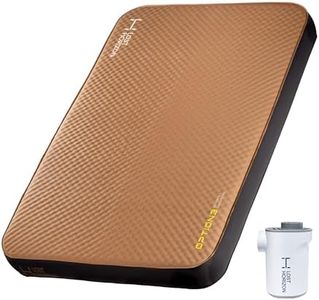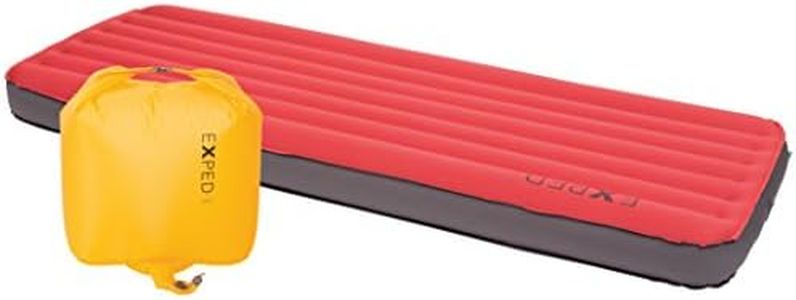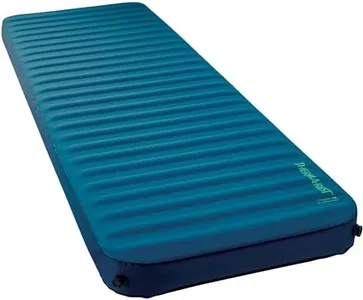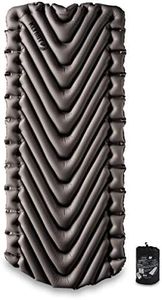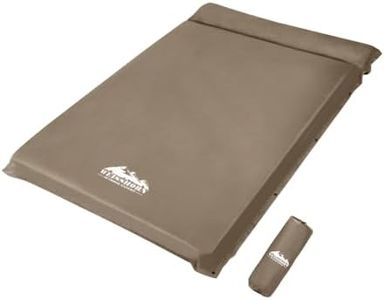We Use CookiesWe use cookies to enhance the security, performance,
functionality and for analytical and promotional activities. By continuing to browse this site you
are agreeing to our privacy policy
10 Best Self Inflating Mattress For Camping
From leading brands and best sellers available on the web.Buying Guide for the Best Self Inflating Mattress For Camping
Choosing the right self-inflating mattress for camping can have a huge impact on your outdoor experience. The right mattress will help you sleep comfortably, wake up refreshed, and stay warm through the night. Since you'll be balancing comfort, portability, and insulation, it’s important to look at key specs and understand how each one matches your camping style—whether you’re backpacking, car-camping, or setting up in colder climates.ThicknessThickness refers to how tall the mattress is when fully inflated. This matters because a thicker mattress usually means more comfort, especially if you sleep on your side or camp on rough ground. Thin options (under 2 inches) are more lightweight and packable, great for backpacking where you want to save on weight and space, but they offer less cushioning. Medium thickness (2–3 inches) balances comfort and size, working well for general camping. Thick mattresses (over 3 inches) are best for maximum comfort, great if you’re prioritizing a good night’s sleep and don’t mind carrying something bulkier. Consider how sensitive you are to sleeping on hard ground and how much gear you’re comfortable carrying when selecting the right thickness for you.
R-Value (Insulation)R-Value measures how well the mattress insulates you from the cold ground. A higher R-value means better warmth. Low R-values (1–2) are best for summer or warm-weather camping, while mid-range values (2–4) will handle most three-season conditions. High R-values (4+) are meant for cold weather or winter camping. If you tend to feel chilly or camp in colder months, go for a higher R-value. If you’re a fair-weather camper, you can pick a lower value to save on weight and pack size.
WeightThe weight of a self-inflating mattress affects how easy it is to carry, especially if you're hiking to your campsite. Lightweight options (under 2 lbs) are great for backpackers and those who carry all their gear, while heavier mattresses (over 2 lbs) are fine for car campers who don’t need to worry about weight. Think about how far you'll need to carry your gear and how much you're willing to lug around before choosing.
Packed SizePacked size is how small the mattress gets when rolled or folded. Smaller packed sizes are ideal for backpacking or when you have limited space in your vehicle. Larger sizes are usually more comfortable but take up more room. Consider your storage and transport options: if you’re limited on space, look for compact models. If space isn’t an issue, bigger mattresses will usually feel plusher.
DimensionsDimensions refer to the length and width of the mattress. Standard widths and lengths are suited for most adults, but there are also longer, wider, or even double options available. Taller or broader users and those who like extra room will want to size up. If you’re an active sleeper, a wider mattress can help keep you comfortable without falling off during the night. Match the dimensions to your sleeping style and body size.
Ease of InflationSelf-inflating mattresses partially inflate on their own when the valve is opened, but some require more effort to finish inflating. Some designs inflate faster or require less manual blowing. If quick setup is a priority, look for mattresses with a reputation for easier or more efficient inflation. If you don’t mind waiting or adding a few breaths, most models should suit.
Durability/MaterialThe outer material influences how tough the mattress is against punctures and rough terrain. Thicker fabrics last longer and withstand more abuse but can weigh more, while lighter materials shed ounces but are more delicate. Consider how rough your trips might be—remote or rocky sites call for tougher materials, while typical campground use might allow for lighter options.
